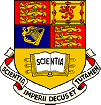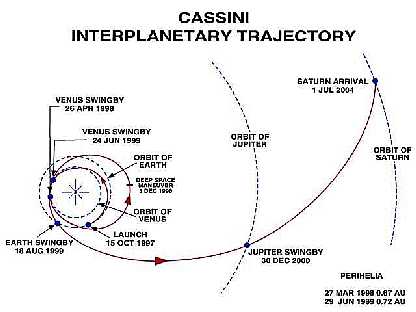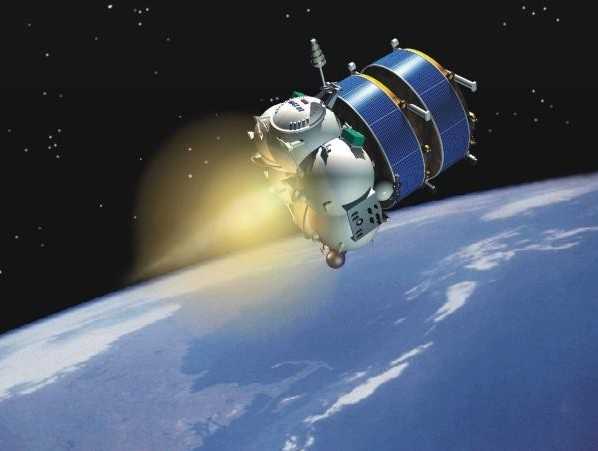
 |
|
News Page |

February 2000 |
This month's news stories:SPACE in the new Millennium |
 SPACE: Our First Decade and Beyond in the 21st Century
SPACE: Our First Decade and Beyond in the 21st CenturyThe millennium is just a month old (unless we want to split hairs and say that it'll begin only next year), so it is a good time to look forward to the near future, the next ten years or so. The really good news is that we have never had so much to look forward to before. Indeed, we've never had so many missions before; we are covering more scientific topics than ever; and we have several world-class "firsts" within our grasp. Space missions count as major milestones for us, so the list below gives the structure of our scientific programme for many years to come.
First, Ulysses will be 10 years old in October 2000. The excellent data from that unique mission which is again approaching the South polar region of the Sun continue to provide us with exciting new science, now about the effects of solar maximum activity. We count on Ulysses going strong to 2004, to complete its second full polar orbit around the Sun.
Cassini is well on its way to Saturn, following the trajectory shown in the diagram above (source JPL). After the Earth flyby last August, Cassini will fly by Jupiter on 31 December 2000. We are gearing up to taking full advantage of this major mission, to explore the ringed planet, its moons (in particular Titan) and its magnetosphere. Saturn Orbit Injection will be in July 2004 and we confidently expect to make several major discoveries in the following years, as the mission unfolds the saturnian system.
 This summer we will be looking with some anxiety towards the East, to Baikonur in Kazakhstan, to watch the four Cluster-II spacecraft being launched in pairs on two Soyouz-Fregat launchers. After the disaster that struck the first Cluster, in June 1996, we are really looking forward to the ground-breaking magnetospheric science that this much awaited mission will deliver. The first of two test flights of the Fregat upper stage has just been successfully completed. The second, with the full Cluster launch scenario, will take place at the end of March. The picture on the right shows an artists impression of the Fregat carrying two Cluster spacecraft (photo ESA). With Cluster-II, we will explore the Earth's magnetosphere as never before, and we expect to work on the Cluster observations through much of the next decade.
This summer we will be looking with some anxiety towards the East, to Baikonur in Kazakhstan, to watch the four Cluster-II spacecraft being launched in pairs on two Soyouz-Fregat launchers. After the disaster that struck the first Cluster, in June 1996, we are really looking forward to the ground-breaking magnetospheric science that this much awaited mission will deliver. The first of two test flights of the Fregat upper stage has just been successfully completed. The second, with the full Cluster launch scenario, will take place at the end of March. The picture on the right shows an artists impression of the Fregat carrying two Cluster spacecraft (photo ESA). With Cluster-II, we will explore the Earth's magnetosphere as never before, and we expect to work on the Cluster observations through much of the next decade.
Our longest approved mission is undoubtedly our participation in the Rosetta Cometary Rendezvous programme. At present we are hard at work on our instrumentation, with the launch only three years away, but then a long wait begins as Rosetta will only reach the target comet, Virtanen, in 2011. A new generation of space physicists will have to take the relay to exploit the observations that will be made around that comet.
Other space missions in which we have a direct interest include the Japanese Solar-B mission (to be launched in 2004), to study solar phenomena in greater detail then before; the BepiColombo Mercury Cornerstone mission of ESA which has grown out of a proposal we made to the Agency back in 1993; the Europa Orbiter mission of NASA on which we have proposed to fly a magnetometer to discover the oceans underneath the icy surface of this moon of Jupiter.
Within the last month, we took part in four new mission proposals to ESA. With our scientific and instrumentation programmes at full speed in the next decade, just with the missions that are already flying or about to fly, we need now to plan for the future, beyond Ulysses, Cassini, Cluster, to the next decade of this new millennium.
André Balogh 9th February 2000
View December's news, older news or return to Space and Atmospheric Physics home page